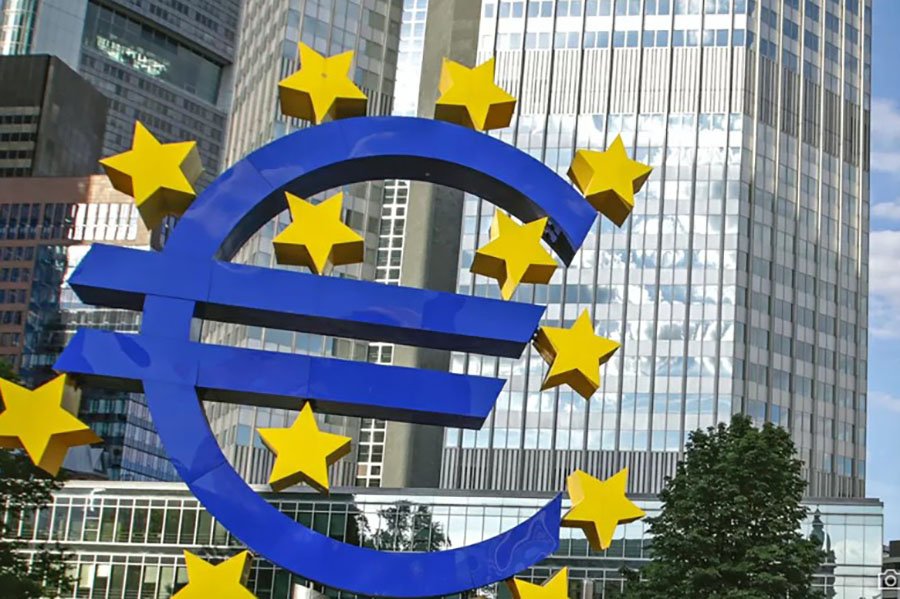читайте также
 Eurozone on Alert: ECB Flags Growing Vulnerabilities in the Financial System
Eurozone on Alert: ECB Flags Growing Vulnerabilities in the Financial System
 Hotel Investment 2025: New Opportunities for the Market — Key Insights from the Cayuga Conference
Hotel Investment 2025: New Opportunities for the Market — Key Insights from the Cayuga Conference
 Vietnam Hit by Record-Breaking Floods: Tourists Advised to Change Their Plans
Vietnam Hit by Record-Breaking Floods: Tourists Advised to Change Their Plans
 WTTC: Travel & Tourism to Create 91 Million New Jobs by 2035 — but a 43 Million Workforce Gap Looms
WTTC: Travel & Tourism to Create 91 Million New Jobs by 2035 — but a 43 Million Workforce Gap Looms
 How Children Receive Residence Permits in Europe: Full 2024 Statistics
How Children Receive Residence Permits in Europe: Full 2024 Statistics
 Cyprus to Introduce Construction Police as Oversight Tightens in 2026
Cyprus to Introduce Construction Police as Oversight Tightens in 2026
Вusiness / Investments / Analytics / Research / Ratings / Switzerland / Sweden / USA / United Kingdom / Finland / Netherlands / Denmark / China / Georgia 04.11.2025
The World’s Most Innovative Countries 2025: WIPO Global Ranking

Photo: Visual Capitalist
The World Intellectual Property Organization (WIPO) has released the Global Innovation Index 2025, evaluating the scientific and technological development of 139 countries across 78 indicators. The report highlights Europe’s sustained leadership while noting the growing influence of Asian innovation hubs — a trend that is gradually reshaping the global innovation balance.
The Global Innovation Index 2025 was prepared by WIPO in collaboration with Cornell University and INSEAD Business School. It assesses seven key pillars: institutional quality, education and research, infrastructure, market sophistication, business environment, and performance in technology and creative industries. The study reveals which countries possess the resources for innovation — and, more importantly, how effectively they convert these resources into measurable results.
Switzerland: The Benchmark of Efficiency
For the twelfth consecutive year, Switzerland ranks as the most innovative economy in the world, leading both the overall list of 139 countries and the high-income group. The country combines moderate investment levels with exceptional innovation outcomes, making it a model of technological efficiency.
Switzerland tops the “Creative Outputs” category, which includes branding, industrial design, and digital services, while also excelling in “Knowledge and Technology Outputs.” Strengths include high governance quality, legislative stability, patent activity, and cutting-edge digital infrastructure. The country achieved a perfect ICT access score of 100/100, reflecting seamless integration between science, business, and society.
Key innovation drivers include corporations Roche, Novartis, Nestlé, and Syngenta, which collectively invest over €25 billion in R&D annually. Academic institutions ETH Zurich and EPFL Lausanne rank among the world’s top engineering universities. WIPO notes Switzerland’s strong university–industry collaboration as a major factor behind its sustainable innovation ecosystem.
Weaknesses include modest labor productivity growth and limited inflow of foreign direct investment, yet the economy remains one of the most resilient globally. Zurich, the country’s sole innovation cluster, ranks among the top 40 global tech hubs, specializing in medical and engineering technologies. WIPO concludes that Switzerland’s success lies not in the scale of spending but in its ability to convert investments into tangible outputs, from advanced exports to intellectual property — keeping it ahead of even the largest European economies.
Sweden: A Stable Number Two
Sweden retained its second place in WIPO’s 2025 Global Innovation Index, maintaining its top position in both Europe and the high-income group for the sixth consecutive year. It remains one of the world’s most consistent performers, ranking second in innovation efficiency and among the top three in researchers per capita and R&D expenditure (3.6% of GDP).
Eight indicators improved in 2025, particularly in science investment and technology adoption, while three declined — notably venture capital deals and labor productivity. Sweden’s strengths include a highly educated workforce, 7.1% of GDP spent on education, and a robust network of universities such as KTH Royal Institute of Technology, Karolinska Institute, and Lund University, all of which rank in the global top 100.
Major R&D investors include Ericsson, Geely Sweden Holdings, Volvo Group, and Hexagon AB. Ericsson remains the top tech investor (€4.4 billion in R&D), while Volvo and Geely drive innovation in the automotive sector. Sweden ranks second globally in “Business Sophistication” and “Creative Outputs,” with strong brand value (19% of GDP) from icons like IKEA, Volvo, and H&M.
Challenges include sluggish productivity growth (0.4%) and a small domestic market. Nevertheless, Sweden’s innovation ecosystem remains robust, supported by two global clusters — Stockholm (digital communications) and Gothenburg (transport engineering) — ensuring balance between science-driven and industrial technologies.
United States: The Global Center of Ideas
The United States ranks third, reaffirming its position as the world’s powerhouse of scientific and technological progress. The country has stayed in the global top three for six consecutive years and continues to lead North America and the high-income group.
The U.S. ranks higher in innovation performance (3rd) than in innovation inputs (6th), underscoring its ability to efficiently convert investments into tangible results. It tops the world in market and business sophistication and ranks third in “Knowledge and Technology Outputs.”
The foundation of this success lies in substantial R&D investments (3.4% of GDP) and massive corporate spending from Alphabet, Meta, Apple, and Microsoft, each allocating tens of billions of euros annually. Universities such as MIT, Harvard, and Stanford form the intellectual backbone of the national innovation system.
The U.S. leads globally in brand value ($6.4 trillion) and intangible corporate assets. It also boasts the world’s largest number of unicorn startups (valued over $1 billion), collectively amounting to 8.5% of GDP. Strengths also include top-tier research output, software exports, and strong science–industry collaboration.
Weaknesses include relatively lower rankings in infrastructure (32nd), institutions (16th), and human capital (13th). However, the U.S. far outperforms the developed-country average. The country hosts 22 of the world’s top innovation clusters, led by San Jose–San Francisco (IT and electronics), New York (pharma), Boston–Cambridge (biotech), Los Angeles (medtech), and San Diego (communications).
According to WIPO, the U.S. remains a “super-producer of innovation” — ranking sixth in resources but third in results, continuously setting the global trajectory in the digital economy and artificial intelligence.
Other Countries in the Top 10
- South Korea – Retains its lead in Asia, with record R&D spending (4.9% of GDP), world-class semiconductor production, and robotics.
- Singapore – Combines open markets, digital governance, and advanced infrastructure, making it a bridge between East and West.
- United Kingdom – Rebounded after prior declines, driven by London and Cambridge clusters in biotech, pharma, and fintech.
- Finland – Excels in education, transparency, and green technologies, maintaining a top spot in sustainability innovation.
- Netherlands – Focuses on applied science, logistics, and agricultural technology; strong university–startup ecosystem.
- Denmark – Balances public support and private R&D; Copenhagen emerging as a biotech and green tech hub.
- China – Enters the global top 10 for the first time, leading developing economies with massive patent output and innovation clusters in Beijing, Shenzhen, and Guangzhou.
Emerging Innovation Hubs
Countries in the second tier — Germany, Japan, and France — retain high scientific potential but lag in rapid commercialization. Israel and Canada stand out for venture capital ecosystems and university innovation, while Estonia remains Europe’s digital pioneer.
Among middle-income countries, Vietnam, Indonesia, and India continue to rise rapidly. India leads its income group for the ninth consecutive year, driven by IT and biotechnology growth. In Eastern Europe, Poland and the Czech Republic show steady progress, supported by exports of technology and innovative business ecosystems.
Georgia ranks 56th, marking significant progress due to a dynamic IT sector and e-government solutions, surpassing several EU members. Russia fell to 60th, reflecting slower innovation and limited international collaboration, though it retains potential in IT, energy, and education.
The lowest ranks are dominated by African, Middle Eastern, and Latin American countries, where science and technology investment remains minimal. Yet even there, local projects in digital education and renewable energy are emerging as seeds of future growth.
The Global Picture
WIPO concludes that global innovation growth is slowing, with declining investment inflows but sustained interest in science and technology. Without long-term state strategies and private-sector participation, even leaders risk stagnation. The innovation map is becoming increasingly multipolar — once dominated by the West, it now clearly tilts toward the East.
Подсказки: WIPO 2025, global innovation index, Switzerland, Sweden, USA, South Korea, Singapore, UK, Finland, Netherlands, Denmark, China, innovation ranking, technology trends





